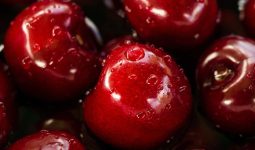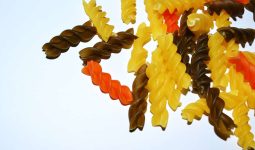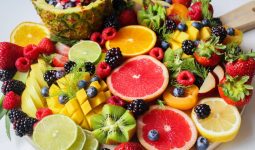Ever heard about the liquid diet? As the name suggests, a full liquid diet simply refers to a diet that allows only the consumption of liquids—or foods that changes to a liquid state at a body or room temperature.
A liquid diet is designed to be a temporary feeding plan while you are under the care of a doctor.
Benefits of a liquid diet
If you’re having problems with chewing food and/or swallowing, there is a chance that your doctor will recommend a full liquid diet.
If you have a problem with chewing or swallowing properly, you stand a huge risk of aspiration or choking when you eat solids or drink.
After an Injury in your jaws, or a dental work, you may suffer from stores in your mouth from the incisions or the pulled out teeth.
Sticking to feeding on a strictly liquid diet until all the pockets in your gum have closed will help to stop particles of food from getting stuck inside them, having food in these pockets can cause infections.
If you have a slow digestive system or one that got damaged from illness, have a disease, or just had surgery, going on a liquid diet while you get better can help you manage any pain and stop possible complications, such as a blockage in your intestines.
If you’re getting set for a test or an imaging procedure to look inside your stomach and intestines, it may be required you go on a liquid diet for at least a day or two prior to the procedure.
Going on a liquid diet will help to ensure that no undigested food remains in your gastrointestinal tract, as this may have affected the outcome of the results.
If you are preparing for a medical procedure, you may also need to switch to a liquid diet before the procedure. Feeding on only clear liquids before you get a surgery done is specifically advised for the purpose of reducing the risk of aspiration.
How It Works?
A full liquid diet has a lot of to similarities to a clear liquid diet which is usually vital before surgery is carried out and is an essential part of the preparation for a colonoscopy.
The major difference between a full liquid diet and a clear liquid diet is that the latter requires the consumption of only clear liquids like broth and water, while the former let’s you consume any kind of liquid, whether thick, light, or see-through liquid.
Your doctor may give you permission to have other foods, such as strained purées or yogurt. If you have a medical condition that’s influenced by what you eat and drink, you may have additional dietary restrictions.
A full liquid diets has a few specific concerns and challenges; for instance, a full liquid diet tends to offer a lower amount of calories when compared to other diet plans. It can be a challenge to get the right amount of nutritious calories daily while you are on a strictly liquid diet.
If you must go on a liquid diet, your doctor will give you instructions that you will be required to follow very strictly. If you are not sure about how many calories you will need to consume in a day, it will be a good idea that you make an appointment with a good dietician or nutritionist to get things clear.
Duration
Usually, a full liquid diet is only prescribed by a doctor for a couple of days to aid your transition back to feeding on your normal diet.
A full liquid diet is rarely required for more than 14 days (this is usually the case before a bariatric surgery or while you are getting healed from a broken jaw).
Due to the restrictive nature of a liquid diet, it is only necessary to feed on this diet for a short period of time and only while under the care of a doctor.
There is also the possibility of you using any other modified diet, like the mechanical soft diet, as a push to help you ease back into eating solid food.
What to Eat?
When you are on a full liquid diet, you’ll have your choice of beverages to choose from. With access to the right tools, you may find it easy to make many of your favorite solid foods liquid diet-friendly.
Thinning, melting, puréeing or straining, fruits, cheese, vegetables, and even flesh can provide you with the right nourishment and help you fill satisfied.
Grains
Grains are very easy to convert once cooked. Some of your cooked cereals can easily be thinned with milk or water, then strained.
Grains of Wheat and rice are not so difficult to thin. If you are concerned about adding some nutrition, use whole milk or a good creamer to blend your rice and wheat instead of plain water or skim milk.
Dairy
For a liquid diet, consuming milk or lactose-free alternatives are not frowned at. You can drink your diary products by the glass and/or include them to your smoothies and shakes for some added nutrition.
You can also use dairy-free milk to thin your oatmeal and other thicker foods. Powdered milk is also an option and a versatile one at that. It can be added to cereals, eggs, and even soups.
If you are not lactose intolerant, it’s not a bad idea for you to boost the protein of your regular milk by combining it with some dry skim milk before you create liquid meals with it.
Yogurt isn’t bad too. You can use regular yogurt too as a base for any of the sweeter-tasting liquid meal options you have and Greek yogurt can also be a good base for a more savory recipe.
Cottage cheese is not at all difficult to blend into a liquid form and it is easy for most shredded cheese to melt with a little application of heat.
While you have been limited to a full liquid diet for two weeks, make use of butter or margarine as frequently as you can to top your meals with calories and fat.
Protein
Meat is solid food, but it is approved as long as it is blended to the consistency of baby food (thinned, puréed, and strained).
Mix properly cooked meat with sweet potato flakes and liquid milk, add the milk and potatoes before cooking to give the meat the correct consistency for a liquid diet.
Nut butter is another option you may want to consider. It is a wonderful source of protein and healthy fats that can easily be added to smoothies or shakes. Egg yolk, egg whites, or Egg Beaters can always be cooked soft or perfectly blended into a liquid meal.
Dessert: this is one reason why sweet tooth will be excited to be on a liquid diet. frozen yogurt, ice cream, and even ice pops that would easily dissolve or melt at room temperature are recommended options when you are on a liquid diet.
But make sure that if you’re taking any of these they do not contain candy, nuts or any other hard pieces of toppings. If you’re interested in consuming puddings and custards they can easily be thinned to a liquid consistency.
If it is necessary that you add some calories to your liquid diet, try adding toppings of whipped cream with blended fruits to your puddings, malt, ice cream, or milkshakes.
Beverages
Any Juices, clear broths, or other nonalcoholic drinks are fully approved on a full liquid diet. Nevertheless, vegetables and fruit juice may contain more fiber than you need or has been recommended by yours.
Instead of purchasing your juice, just making it with your juicer or high-speed bullet blender gives you the opportunity to control the consistency.
When you have created your juice, you also have the option of pouring the liquid through a mesh sieve, or if available a strainer to filter the liquid from any lingering residue.
You can use half-and-half, milk, and non-dairy creamer to introduce calories to coffee or tea. If you are interested in other hot beverages like chai, cider, and milk-based espresso drinks, you can go ahead as they are also approved.
On the condition that they do not contain any solid pieces such as mulling spices, chocolate chips, or nuts.
Recommended Timing
One primary challenge of going on a liquid diet is calculating whether or not you’ve consumed adequate nutrition in a particular day. You mustn’t stress over finding out if you have had enough.
Simply follow the general rule of eating enough to feel satisfied (just the same way you would if you were to eat solid food).
However, if you have been dealing with certain digestive issues, or you are recovering from an illness or surgery, do not attempt to feel full quickly.
The pains or discomfort that come with surgery or illness may set in too quickly, or before you’ve consumed enough calories to get adequate nourishment.
You can begin by drinking as much as possible every 15 minutes or 20 minutes. The easiest trick will be to take small sips of your liquid food from a small glass instead of trying to drink a larger quantity in one sitting. It may be challenging, but it is best that you plan your liquid meals as frequently as 4-8 times daily.
To make sure that you are properly hydrated and nourished, aim to drink a minimum amount of 64 fluid ounces of food by the end of every day.
Cooking Tips
The easiest way for you to thin soft food like oats or mashed potatoes to make them suitable for your liquid diet is to include water.
Whenever you have to eat a food that doesn’t convert to liquid at room temperature the way ice pops would, the easiest way to get them to become liquid enough is by applying some heat.
Dairy products such as shredded cheese can easily be melted over low heat or in the microwave and poured into soups or purées. Of you must melt chocolate, you can do that by melting in a pan or pot on the stovetop.
The usefulness of kitchen tools like food processors and blenders can never be overemphasized when you find yourself in a situation where you are required to feed on liquid meals.
Not only can your blender or food processor help you puree vegetables and fruits easily when you set a blender in a lower setting it can help you grind thicker foods such as oatmeal or potatoes into a safe consistency for your liquid diet.
Rice, pasta, and potatoes can be cooked easily until they’re very soft, then you can go ahead to thin them with butter, gravy, or water.
There is also the option of you using milk or water and heat to soften your crackers which you can then add to your broth or soup.
Modifications
Not always, but a full liquid diet may require some extra modifications if you have been diagnosed with any other medical conditions or if you have specific dietary needs.
For instance, if you have just had gastric surgery, your doctor may recommend that you avoid acidic drinks such as coffee or orange juice as they can irritate the lining of your stomach and slow down the healing process.
If you have a cardiovascular or kidney disease, chances are that you have probably been told to restrict your intake of fluid. If at all you are requested to go on a liquid diet, your doctor will give you some specific instructions to help you feel better.
If you are diabetic, it is important that you ask your doctor the right amount of carbohydrates each liquid meal should contain so that you can maintain your blood sugar levels. If you feel like adding supplements to your liquids, you can opt for Glucernamay as it is also very helpful.
For infants and toddlers, some adjustments may be needed to make a full liquid diet safe for their consumption. For instance, if you want to sweeten food for a child under 12 months of age, honey should not be used.
While your young child may already be used to eating a few diets that include some solid food, there are some specific considerations that you must remember for children in this age group.
When making liquids meals, avoid the temptation to include any new food to your young child’s diet. Give them only foods that you have successfully introduced to them so that they are encouraged to eat.
To ensure that your child gets a balance of nutritious liquids, It won’t be a bad idea for thou to limit the quantity of milk they drink, as milk can be easily filling. Adding some electrolyte drinks to your child’s diet, or introducing ice pops, can also help to prevent dehydration.
If you have any food allergies or stick to any special diet, see to it that you carefully check the ingredients of mixes, supplements, or powders that you use. You may or may not be able to find specific products that are compatible with your diet, such as vegan-friendly or gluten-free options.
Considerations
Whenever you are required to make a change to your diet, even if it is for a short period of time, it is important that you think about the effect this change will have on other aspects of your life.
Apart from the obvious parts such as meal preparation and grocery shopping, you would also want to consider your daily responsibilities at home and at work. For instance, planning lunch or dinner for your family.
General Nutrition
A full liquid diet can be nutritionally balanced, however, they usually turn out low in calories. The typical goal for calories intake is around 1,500 calories per day, but not lower than 800 calories.
While liquid meals can be fast filling and you may feel satiated for longer. The diet doesn’t have the right amount of fiber and also lacks essential vitamins and minerals.
It is very possible that you would only have to be on a strictly liquid diet for a short time. However, if you are required to be on a liquid-only diet for longer, then your doctor will recommend some liquid dietary supplements that would boost your intake of nutrients.
You can also increase the fat, caloric, and protein content of your liquid meals by adding eggs, powdered supplements, butter, or dry milk.
Sustainability and Practicality
If you are put on a liquid diet while you are injured, or healing from an illness, or surgical procedure, you might not have the motivation or strength required to make your own meals.
If you have family or friends that can help, make sure that you keep them up to speed with your dietary requirements.
You also have the option of preparing many liquid meals in advance so you can freeze them. Shop to stock up on as many easy to cook items as you can early enough. especially items like beverages and supplements.
Safety
It is very unlikely that your doctor will put you on a full liquid diet for longer than two weeks or a month. The only known exceptions are individuals with medical conditions that require them to make use of a liquid-only diet to manage flares of complications or symptoms.
However, people in such conditions can only be fed in that manner while a doctor closely monitors them.
If it is unavoidable that you stay on a liquid diet for a long stretch of time or more than one time, then it would be helpful if you could get connected with a registered nutritionist or dietitian. One who will help you plan your meals and offer the best nutrition advice and recommendations.
You will be monitored by your entire medical team for nutritional deficiencies, and weight loss that can possibly occur when you are placed on a restricted diet.
The good thing about this is that these professionals can help you design meals that contain enough calories and nutrition that will keep you healthy and sustain you throughout the process.
They would also recommend some supplementation if the need arises.
Flexibility
Even though you will not be offered the dietary variety that you are used to when on a solid food diet there is no chance that you will be completely restricted to only liquid food.
If you decide to dine out, there is also a possibility that you would find some food options that are suitable for someone on a liquid diet.
Examples include ice-cream, milk, and soup which usually has a spot on the menu of some very good restaurants. Also, if you search for restaurants that offer breakfast you could find smoothies and juices on their menu as well.
Sometimes, your favorite drive-through might just be the perfect place for you. A couple of fast-food restaurants that I know have a wide range of amazing beverage choices like high-calorie milkshakes.
Dietary Restrictions
It is good that you ask your doctor about how whatever health condition you may have, or whatever dietary restrictions you may have had to abide by, will affect your new liquid-only diet. And also, ask to know how a liquid diet will have to be adjusted in response to your unique needs.
For instance, if you have had to follow a diet to manage a condition like gastroparesis, it would be vital that you void any high-fat additions or liquids. You may have to avoid adding salt to your foods or drinks if you are managing a condition such as hypertension that is sodium restricted.
For people who are lactose intolerant, they would have to avoid cleaning their foods using cow’s milk or adding any form of calories to their tea and coffee using diary products.
It would also be best that you inspect the list of ingredients that is written on the label of any of the nutritional liquid supplements you will be using.
While it is possible for most vegetables and fruits juices to be strained you may have to avoid any high-fiber juice if you have been placed on a low-fiber diet.
Support and Community
Even if you’re able to recreate many of your favorite solid food flavors on a liquid diet, you may easily get bored of not being able to chew your food. Also, if you are healing from an injury, illness, or surgery you may be trying to manage other symptoms or pain.
Family, friends, other caregivers make up a vital part of your healing process. Apart from the support you get from your medical team, you may be needing some practical help like meal preparation at home. Emotional support for those who love and care about you will also be needed.
If the reason you’re on a liquid diet is as a result of a specific condition, especially if it is a chronic one, getting some support from other people dealing with the same condition might make so much different and help to speed up your healing process.
Sometimes, the main ability to share your feelings and worries with people who you know genuinely understand is enough to make you feel better.
There is a chance you might find an in-person support group near where you reside or at the hospital where you are getting treated. But you also have the option of looking online for groups or websites that provide support for patients with a similar condition.
Cost
There is a possibility that you may be able to continue purchasing many of the groceries that you like such as pasta meat and other fresh produce. the only difference is how you would have to prepare the foods so that they are suitable for your liquid diet.
You just may be able to save yourself some extra work by buying foods that have already been blended or pureed.
Even though baby foods do not come in portions that are adequate enough for an adult diet container of strained vegetables, meats, and fruits can work as an amazing base for a liquid diet.
While it is very convenient and easy, baby food can be very expensive so you might find it a lot more cost-effective if you cure your own food at home.
Kitchen appliances and tools that are needed to prepare a liquid diet such as food processor and blender, are usually costly. However, the good news is that you can get some less expensive options that can only perform basic tasks if you shop online.
Side Effects
If you must be on a liquid diet for longer than a few days, you may get constipation from the lack of fiber. Your medical doctor may recommend that you include an over-the-counter fiber supplement, like Metamucil, to your strictly liquid diet.
It’s also not rear to have frequent, or loose stools on a full liquid diet, because you are not eating any kind of solid food. As you start to gradually return to a solid food diet, expect that your bowel movements should adjust accordingly.
Weight loss is another possible side effect. This leanness may be sudden and significant and can occur even if you are on a liquid diet for a very short time. Once the caloric deficit that is created by the liquid diet is corrected, your weight should typically be restored.
The lack of essential vitamins and minerals, as well as the low-calorie value of a liquid diet, may cause you to feel tired and unwell. Other symptoms you may experience include depression and irritable emotions which can easily be heightened by under-nutrition.
It is almost impossible to find someone who decides to go on a liquid-only diet, just to they feel like. We would like to hear from you, let us know what you think about a liquid diet by leaving a comment below.









